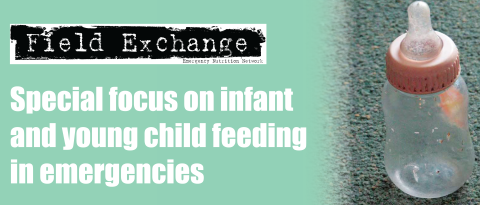Managing severe acute malnutrition in high HIV prevalence areas
Summary of research1

An inpatient facility in Malawi
The challenges of managing severely malnourished HIVinfected children in areas of high HIV prevalence are examined in a recent article in the Lancet. The article starts with the premise that in sub-Saharan Africa, mortality is three times higher in HIVinfected children with severe malnutrition than in non-infected children. The HIV pandemic in sub-Saharan Africa has substantially altered the epidemiology, clinical presentation, pathophysiology, case management and survival of severely malnourished children. Case-fatality rates range from 20-50%, despite the use of WHO guidelines. Furthermore, HIV affects a wide range of children, many of whom are admitted to nutrition rehabilitation units and the metabolic responses in HIV-infected malnourished children are largely unknown.
In sub-Saharan Africa, young HIVinfected severely malnourished infants present with multiple pathology and many have persistent diarrhoea, pneumonia, extensive skin infection and oral thrush. Young children aged 3-6 years are often admitted with persistent diarrhoea and have high case fatality with poor response to treatment. In addition, extremely wasted and stunted young adolescents, previously rarely admitted outside the setting of famine, are now admitted for nutritional recovery and present with chronic HIVrelated multi-system disease. In Zambia and Malawi, more than half of patients admitted to many nutrition rehabilitation units are HIV positive, with case-fatality rates of 40% or higher. The percentages of readmissions are also increasing.
Improvements in treatment will depend on improved knowledge of the cause of infection and antimicrobial susceptibilities, pharmacokinetics in malnourished children and complex drug interactions and toxicities (e.g. antiretroviral therapies (ART) and therapies for tuberculosis). There are also currently inadequate data on the optimum regimen for supportive care in the malnourished child who has adapted to a reduced body mass and organ and system function. (e.g. management of shock). The effects of wide use of co-trimoxazole in HIV-infected populations are not yet certain.
The metabolic and nutrient needs of HIV-infected children need clarification. Appetite is not a useful tool to assess recovery for such cases as persistent anorexia is common. Appropriate diets are also needed for the increasing number of severely malnourished infants under age of 6 months, as unmodified F75 and F100 are unsuitable for them.
The use of F100 or Ready to Use Therapeutic Food (RUTF) is part of standard care for HIV-infected severely malnourished children, but mortality within 4-6 weeks remains high at 38%. Whether it is better to start ART before or after nutritional rehabilitation is unclear. Many children will gain weight with nutrition support alone. When available, CD4-cell count would help to identify those requiring treatment, since up to a quarter of severely malnourished children in food insecure settings will be above the threshold for initiation of ART. Those without WHO stage 3 or 4 HIV disease should be started on co-trimoxazole, but CD4-cell counts do not seem to rise after nutritional rehabilitation and will continue to fall with disease progression. Hence, the need for pharmacokinetic studies during recovery from malnutrition to confirm or establish the correct ART dosing and timing.
The authors of the paper (Blantyre Working Group) recommend that studies be done on the optimum timing and dosing of ART, on the definition of the best therapeutic feeding regimens, and on the better understanding of the basis for treatment of acute and chronic infection and metabolic changes in HIV-infected severely malnourished children.
1Heikens G et al (2008). Case management of HIV-infected severely malnourished children: challenges in the area of highest prevalence. Vol 371, April 12, 2008. Available at www.thelancet.com
Imported from FEX website


